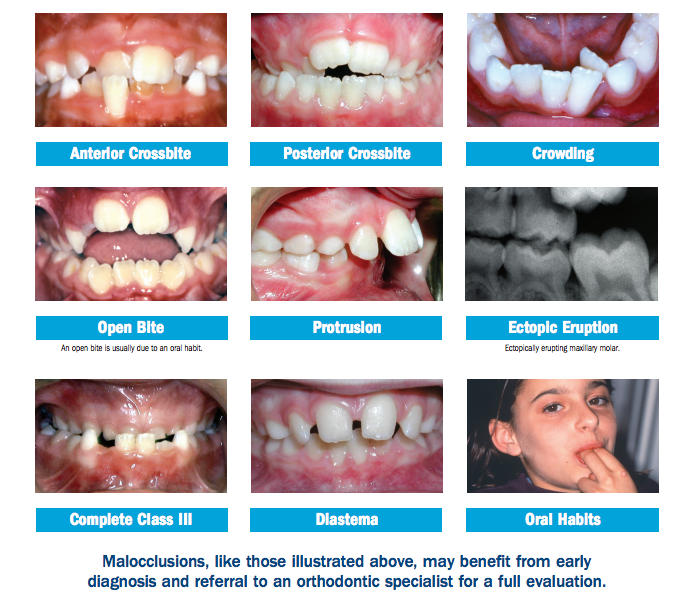Unknown Facts About Causey Orthodontics
Table of ContentsSome Known Incorrect Statements About Causey Orthodontics Causey Orthodontics Fundamentals ExplainedThe Of Causey OrthodonticsCausey Orthodontics - An OverviewThe Only Guide for Causey Orthodontics
Disregarding occlusal connections, it was common to get rid of teeth for a variety of dental concerns, such as malalignment or overcrowding. The idea of an intact dentition was not commonly valued in those days, making bite relationships appear unnecessary. In the late 1800s, the principle of occlusion was vital for developing trusted prosthetic replacement teeth.As these ideas of prosthetic occlusion progressed, it ended up being a vital tool for dental care. It remained in 1890 that the job and effect of Dr. Edwards H. Angle started to be felt, with his payment to modern orthodontics especially significant. Focused on prosthodontics, he educated in Pennsylvania and Minnesota prior to guiding his focus towards oral occlusion and the treatments needed to preserve it as a typical condition, therefore ending up being known as the "papa of contemporary orthodontics".

The principle of optimal occlusion, as postulated by Angle and included right into a category system, allowed a shift towards treating malocclusion, which is any deviation from normal occlusion. Having a complete collection of teeth on both arcs was very searched for in orthodontic therapy because of the demand for precise relationships in between them.
The smart Trick of Causey Orthodontics That Nobody is Talking About
As occlusion ended up being the crucial priority, face proportions and aesthetics were ignored - family orthodontics. To attain ideal occlusals without using outside forces, Angle proposed that having best occlusion was the very best means to get optimal face looks. With the passing of time, it became rather noticeable that also an exceptional occlusion was not appropriate when taken into consideration from a visual factor of sight
Charles Tweed in America and Raymond Begg in Australia (who both examined under Angle) re-introduced dental care extraction into orthodontics throughout the 1940s and 1950s so they could enhance facial esthetics while likewise making certain far better security worrying occlusal relationships. In the postwar period, cephalometric radiography started to be utilized by orthodontists for gauging changes in tooth and jaw setting brought on by development and therapy. It ended up being noticeable that orthodontic treatment might adjust mandibular development, bring about the development of practical jaw orthopedics in Europe and extraoral pressure procedures in the United States. Nowadays, both useful appliances and extraoral devices are applied around the globe with the goal of changing development patterns and kinds. Seeking true, or at least improved, jaw connections had actually become the main goal of treatment by the mid-20th century.
The 2-Minute Rule for Causey Orthodontics
 The American Journal of Orthodontics was developed for this objective in 1915; before it, there were no scientific objectives to comply with, nor any accurate category system and brackets that did not have functions. Till the mid-1970s, braces were made by covering metal around each tooth. With improvements in adhesives, it became possible to rather bond metal braces to the teeth.
The American Journal of Orthodontics was developed for this objective in 1915; before it, there were no scientific objectives to comply with, nor any accurate category system and brackets that did not have functions. Till the mid-1970s, braces were made by covering metal around each tooth. With improvements in adhesives, it became possible to rather bond metal braces to the teeth.This has had purposeful results on orthodontic treatments that are provided frequently, and these are: 1. Right interarchal connections 2. Correct crown angulation (idea) 3.
The advantage of the style hinges on its brace and archwire mix, which calls for just marginal cord flexing from the orthodontist or clinician (Causey Orthodontics). It's aptly named after this function: the angle of the port and density of the brace base eventually identify where each tooth is positioned with little need for additional adjustment
Causey Orthodontics Things To Know Before You Buy
Both of these systems utilized similar brackets for each tooth and required the bending of an archwire in 3 airplanes for situating teeth in their desired positions, with these bends dictating supreme placements. When it comes to orthodontic home appliances, they are split right into 2 types: removable and taken care of. Detachable appliances can be handled and off by the client as needed.

Therefore, nearly all contemporary set devices can be thought about variations on this edgewise home appliance system. Early 20th-century orthodontist Edward Angle made a major contribution to the world of dentistry. He produced four unique appliance systems that have been used as the basis for lots of orthodontic therapies today, disallowing a couple of exemptions.
An Unbiased View of Causey Orthodontics

The cable finished in a string, and to relocate ahead, an adjustable nut was utilized, which enabled an increase in circumference. By ligation, each specific tooth was affixed to this large archwire (best orthodontist). Due to its limited variety of movement, Angle was incapable to accomplish precise tooth placing with an E-arch
These tubes held a firm pin, which might be rearranged at each consultation in order to relocate them in place. Dubbed the "bone-growing appliance", this device was theorized to encourage much healthier bone growth as a result of its capacity for transferring pressure straight to the roots. Implementing it proved troublesome in reality.